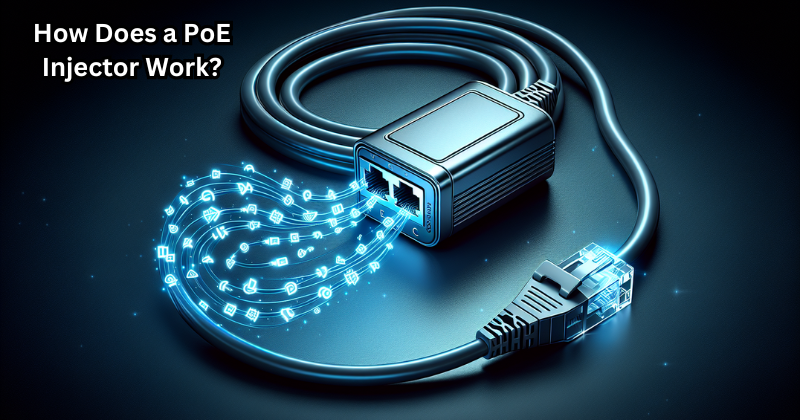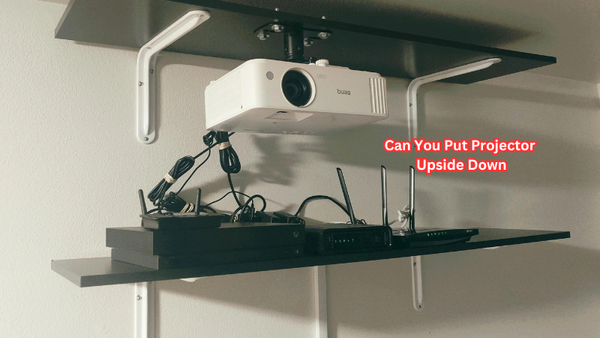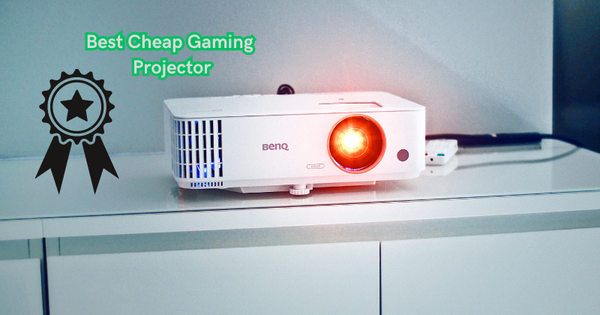Wondering how does a PoE injector work? A PoE injector sends power and data through one Ethernet cable, enabling devices like IP cameras and wireless access points to function without separate power sources. This simplifies network installations significantly.
Key Takeaways
- PoE injectors simplify network infrastructure by enabling both power and data transmission over a single Ethernet cable, supporting various devices like IP cameras and wireless access points.
- The introduction of the IEEE 802.3bt standard allows PoE injectors to support more power-intensive devices, with power capacities up to 90W, expanding their application scope.
- PoE injectors come in two main types: active, which negotiate power delivery and ensure device safety, and passive, which supply power directly and are less expensive but require careful matching with device power needs.
How Does a PoE Injector Work? Simple Guide to Power Over Ethernet
PoE injectors, a type of poe device, are transformative devices that enable power and data transmission over a single Ethernet cable.
This guide will illuminate how these compact yet powerful tools make complex network setups a breeze, supporting a wide range of low-powered devices, like surveillance cameras and wireless access points, often situated in locations far from convenient power sources.
By integrating the latest IEEE 802.3bt standard, PoE technology now supports even more power-intensive devices, increasing its utility and scope.
Introduction
At the heart of modern networking solutions lies the PoE injector, a versatile device that adds power to an Ethernet cable, enabling PoE-enabled devices to receive both power and data through a single cable. This not only simplifies the network infrastructure but also extends the reach of network installations to places where power outlets are scarce or absent.
From powering IP cameras to illuminating PoE lighting, PoE injectors are the unsung heroes behind the scenes.
Understanding PoE Technology
PoE technology is a marvel that simplifies network infrastructure by delivering power and data over the same twisted pair Ethernet cabling.
This innovation is not only convenient but also cost-effective, as it reduces the need for additional wiring and power supplies. With the advent of the IEEE 802.3bt standard, PoE’s power capacity has soared to 90W, empowering a broader range of devices and applications.
What is a PoE Injector?
A PoE injector is a device that:
- Infuses power into an Ethernet cable
- Creates a lifeline for PoE devices
- Acts as a bridge that allows non-PoE switches to supply both power and data to PoE-compatible equipment
- Eliminates the need for separate power supplies
With a PoE injector, devices such as IP cameras, wireless access points, and VoIP phones can thrive in environments where power outlets are either inconvenient or unavailable.
How Does a PoE Injector Work?
The operation of a PoE injector is a symphony of efficiency. It takes the separate inputs of power and network data, marrying them into a unified output that traverses the length of an Ethernet cable to energize a connected device. This transformation is made possible through a process of converting AC power to the DC power required by low-voltage PoE devices.
With three critical ports - power input, data input, and power/data output - PoE injectors support a range of Ethernet cables and devices, providing a seamless power and data flow.
Data In Port
The Data In port on a PoE injector is a crucial entry point for network data. It’s where the magic begins, as data from the network switch is received and prepared for its journey. This port is directly connected to an Ethernet cable from a non-PoE switch and plays a pivotal role in transforming the incoming data to be sent out alongside power.
PoE/Data Out Port
The PoE/Data Out port, also known as the poe port, is where the combined power of data and electricity is delivered to the connected device through a poe port power supply. This port consolidates the transformed inputs and dispatches them through a single Ethernet cable, ensuring the device receives what it needs to function optimally.
Connecting this port to the powered device is as simple as plugging in an Ethernet cable, which then becomes the sole lifeline for both power and data.
DC Power Conversion
DC power conversion is the heart of a PoE injector’s function. The conversion from AC to DC power is a critical step, ensuring safety and compatibility as power travels along the Ethernet cables to the powered devices. This careful conversion is key to reducing electrical hazards and delivering a stable power supply that meets the precise needs of PoE devices.
Types of PoE Injectors
Navigating the world of PoE injectors, one encounters two main types: active and passive. Each has its unique attributes and uses. Active injectors communicate with connected devices to supply the correct power, while passive injectors provide power without such negotiation, requiring a precise match with the device’s power needs to avoid potential risks.
Moreover, standard PoE injectors align with IEEE 802.3 protocols, ensuring compatibility and safety across various devices and network configurations, including the management of poe injector’s voltage.
Active PoE Injectors
Active PoE injectors are the paragons of conformity and safety in the PoE realm. Adhering strictly to IEEE 802.3 standards, they guarantee that only the required power reaches your devices, thanks to a negotiation process that prevents any possibility of electrical damage.
These injectors cater to a range of power needs, from 15.4W, as defined by IEEE 802.3af, up to a robust 90W under the IEEE 802.3bt standard.
Passive PoE Injectors
In contrast to their active counterparts, passive PoE injectors are the mavericks of the PoE world. They supply power directly, without the safety net of a negotiation process, making them less expensive but potentially more hazardous if not used with caution. One example of a passive PoE injector is a device specifically designed for use with certain IP cameras or wireless access points that require a fixed voltage.
Benefits of Using PoE Injectors
The adoption of PoE injectors comes with a bouquet of benefits. These devices declutter the network environment by eliminating excess cables and streamline the process of supplying power to devices.
PoE injectors are not only a boon for cost efficiency but also for the flexibility and scalability of network infrastructure, allowing for easy additions and reconfigurations without the need for new power outlets.
Simplified Cabling
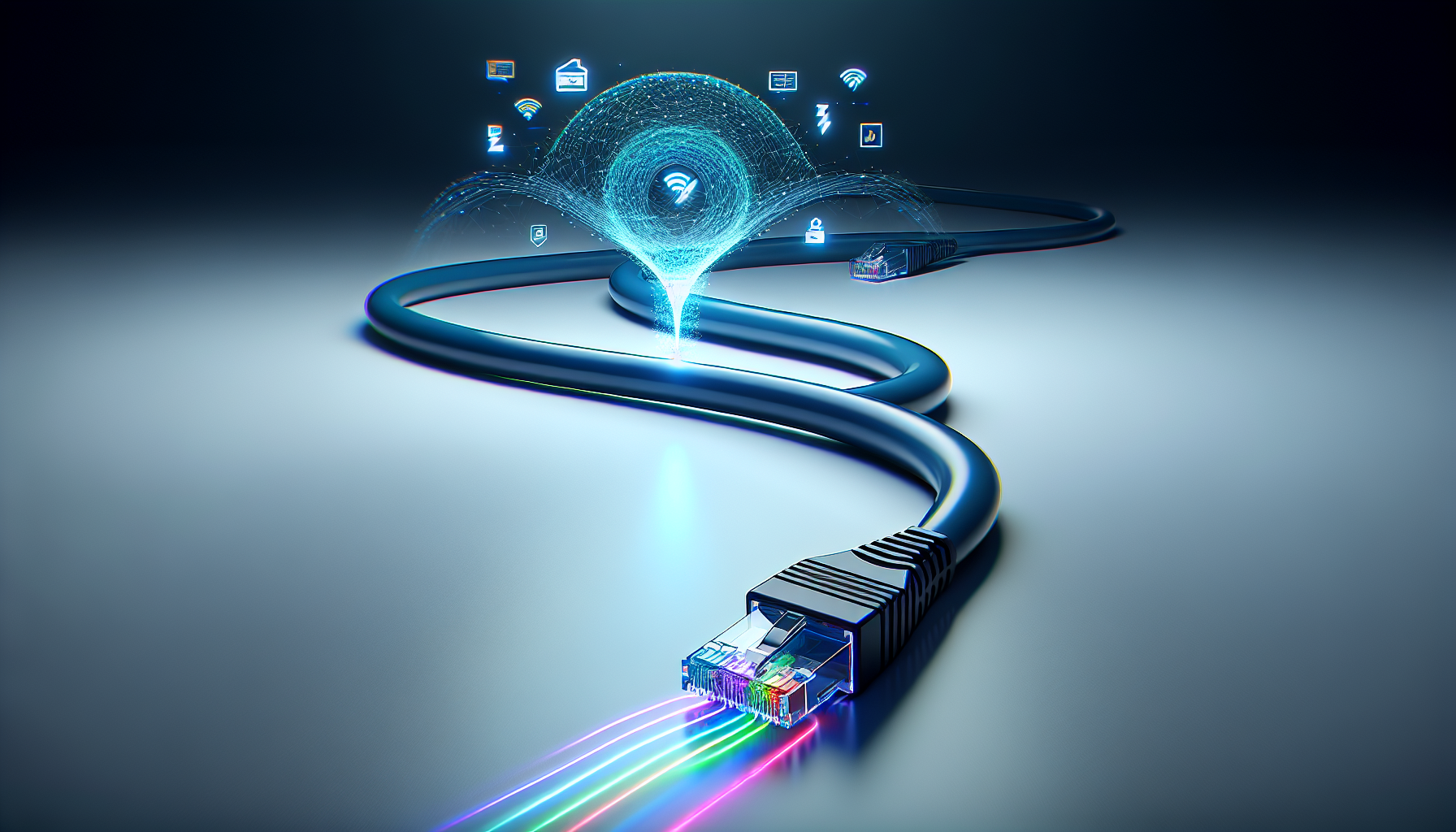
The genius of PoE injectors lies in their ability to massively simplify cabling. By enabling a single Ethernet cable to carry both power and data, the need for additional wiring is a thing of the past. This streamlining is especially noticeable in setups like office networks and surveillance systems, where devices can be placed based on optimal function rather than the availability of power sources.
Cost Efficiency
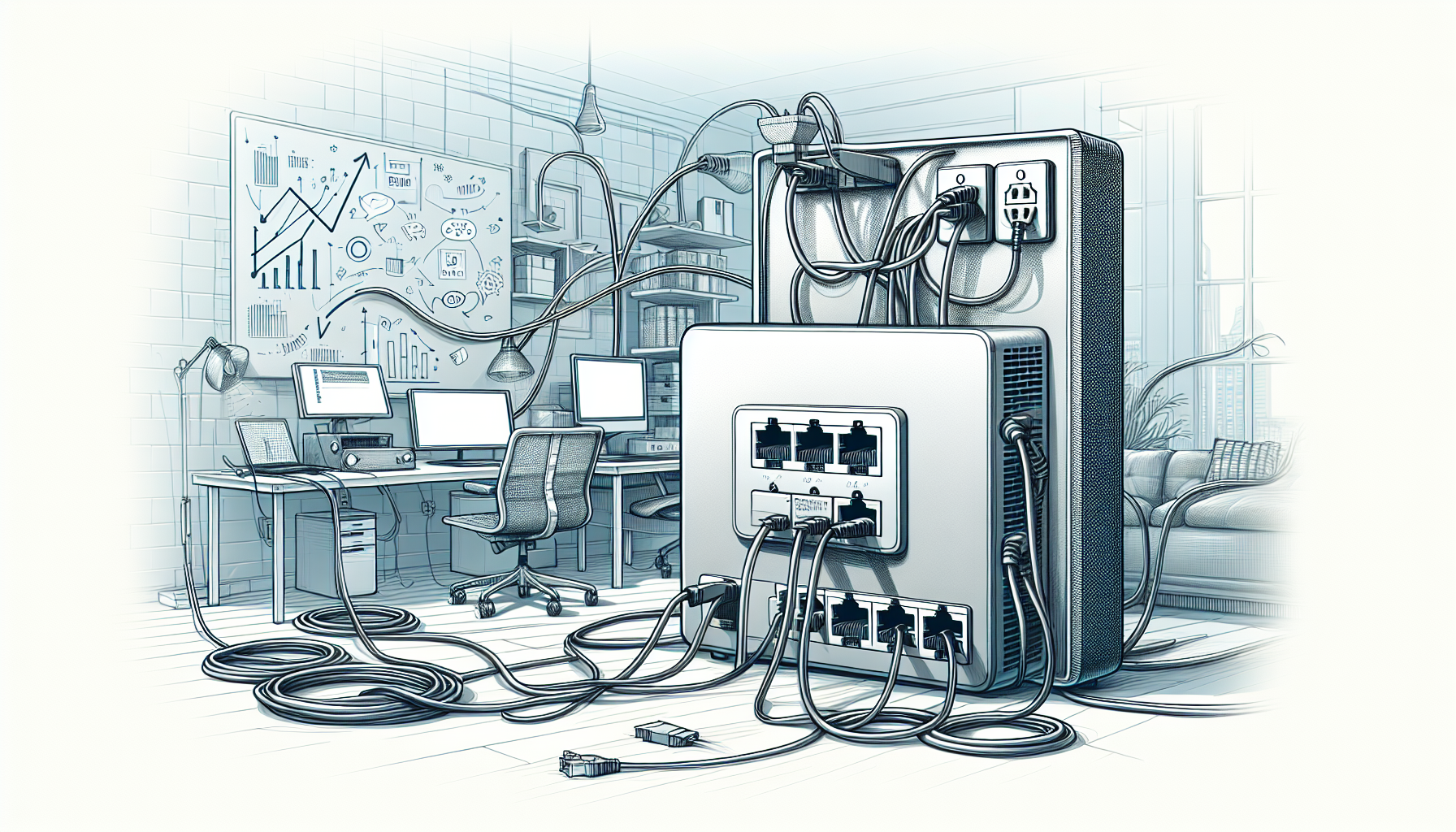
Cost efficiency is another hallmark of using PoE injectors. By leveraging existing LAN cabling for both power and data, the need for electrical installations is significantly reduced, saving both money and time. This dual functionality also means fewer power supplies are needed, which translates to lower overall installation costs.
Flexibility and Scalability
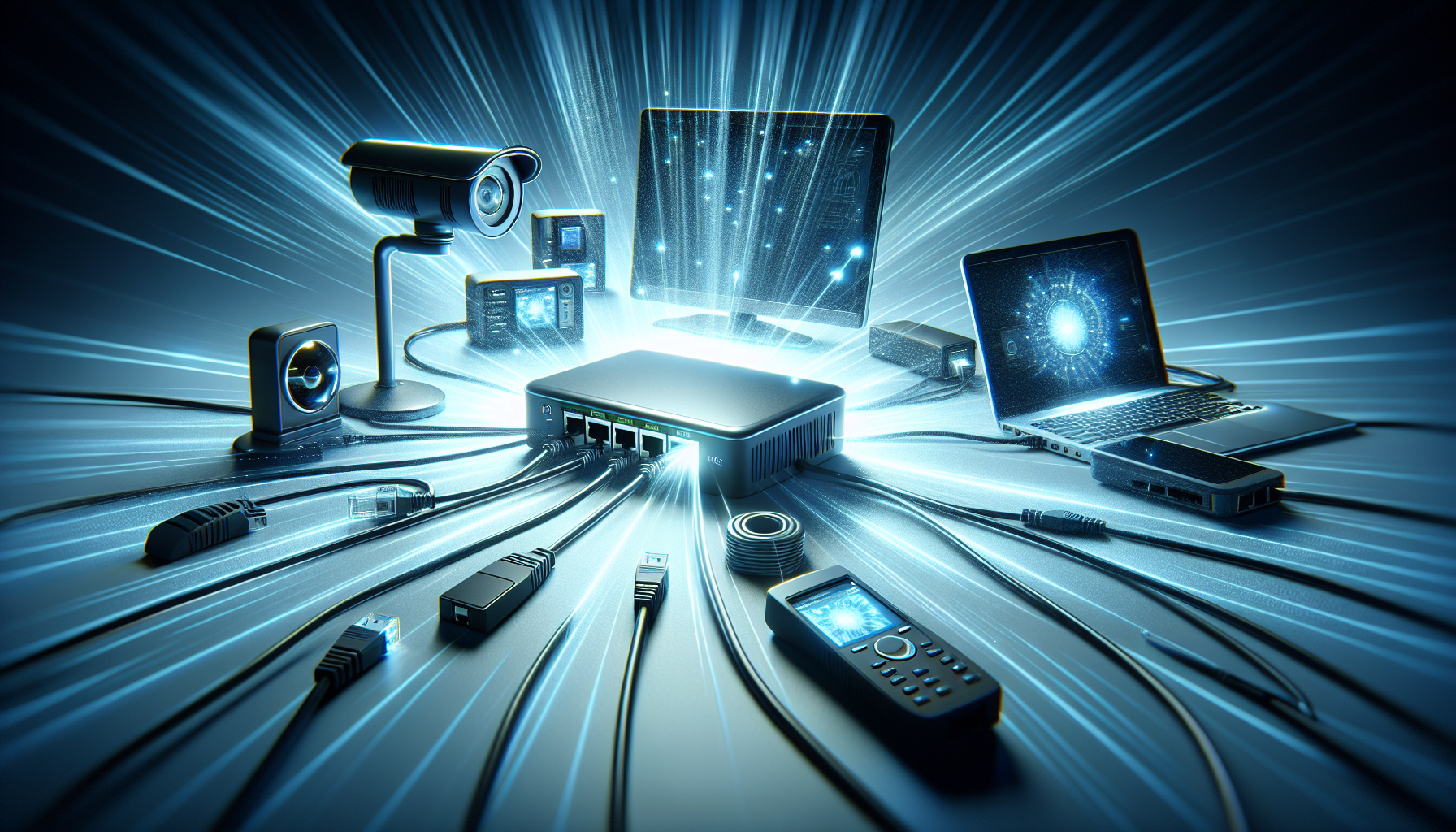
Flexibility and scalability are inherent advantages of PoE injectors. These devices empower network administrators to place equipment like wireless access points in the most optimal locations, irrespective of power outlet availability.
Additionally, PoE injectors facilitate extended cable runs, allowing for devices to be connected over longer distances without concern for voltage drop.
Steps to Install a PoE Injector
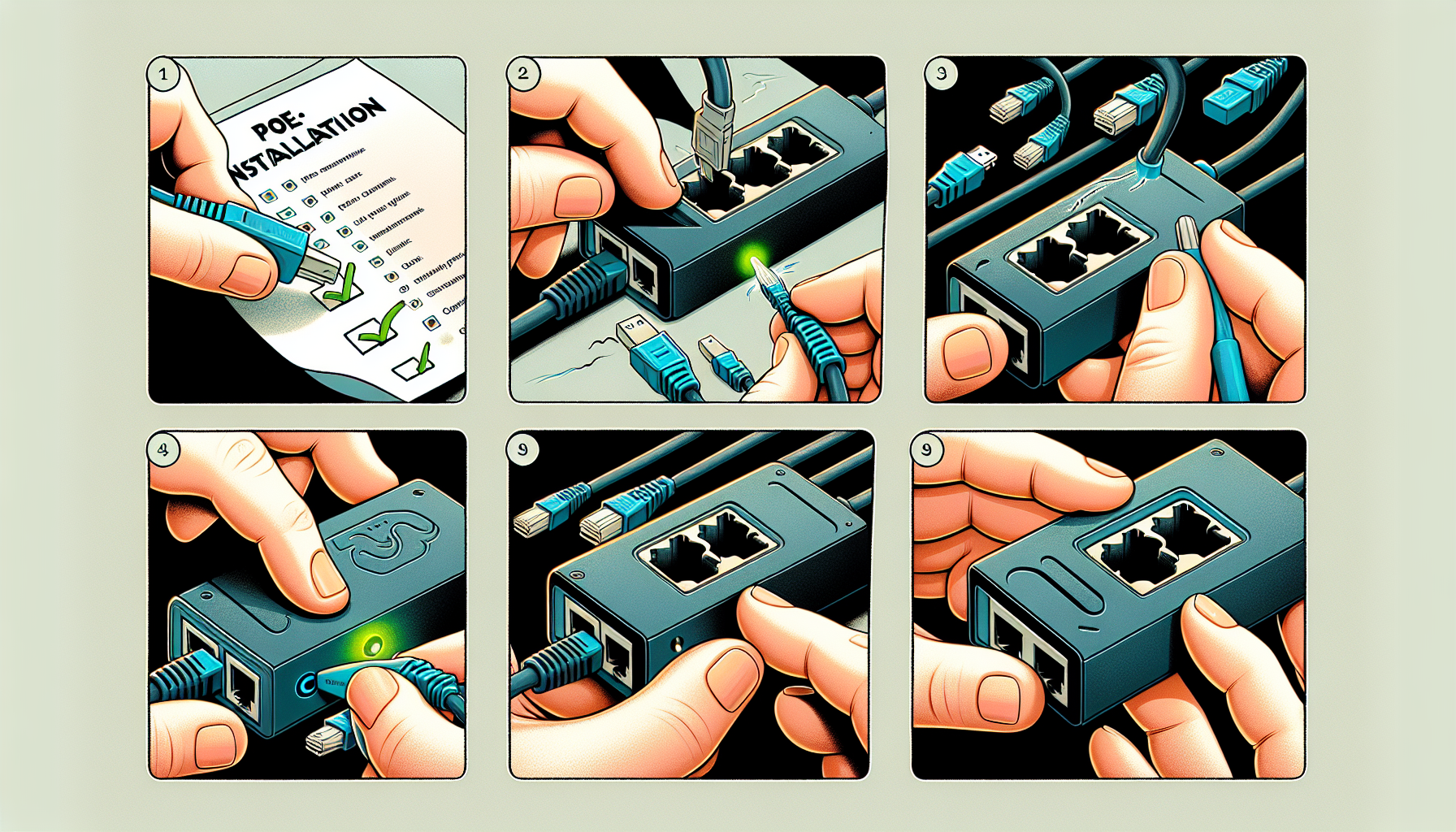
Installing a PoE injector is a straightforward process that, when done correctly, can enhance the functionality of your network. Here are the steps to follow:
- Ensure all devices are powered off to prevent damage during setup.
- Connect the injector to a power outlet.
- Link the injector to both the switch and the powered device.
- Power everything on in sequence to establish a stable connection.
Pre-Installation Checks
Before you embark on the installation journey, pre-installation checks are essential. This involves verifying that your Ethernet cables meet the necessary standards and are in good condition to ensure a reliable connection.
Connecting the Devices
The next step is connecting the devices. Here’s how to do it:
- Connect the network switch to the PoE injector using an Ethernet cable.
- Connect the powered device to the PoE injector using another Ethernet cable.
- Make sure to use appropriate cable lengths to avoid signal loss.
Verifying Connections
Once everything is connected, verifying the connections is key. This includes checking the LED indicators on the PoE injector for correct power and data transmission and ensuring the powered device is functioning as expected.
Choosing the Right PoE Injector
Selecting the right PoE injector for your setup is a decision that hinges on several factors. Consider the power requirements of your devices, the compatibility with your network switch, and the number of devices you intend to power.
This careful consideration will ensure smooth operation and longevity of your network devices.
Power Requirements
The power requirements of your devices are the first considerations. Make sure the PoE injector’s output aligns with the wattage necessary for each device to prevent overloads or insufficient power delivery.
Compatibility
Compatibility is paramount when choosing a PoE injector. It must match the communication protocols and power requirements of your devices to avoid any connectivity issues.
Number of Ports
Finally, the number of ports on a PoE injector should be appropriate for the number of devices you need to power. Single-port options are suitable for fewer devices, while multi-port injectors cater to setups with multiple devices.
Common Applications of PoE Injectors
The versatility of PoE injectors makes them suitable for a variety of applications. IP cameras, wireless access points, and VoIP phones are just some of the devices that benefit from the convenience of PoE technology.
These applications highlight the flexibility and scalability that PoE injectors bring to modern networks.
IP Cameras
For IP cameras, PoE injectors offer a straightforward installation and flexibility in camera placement, especially in areas where traditional power sources are unavailable or difficult to access. By utilizing the IP camera’s PoE port, the need for additional power cables is eliminated.
Wireless Access Points
Wireless access points greatly benefit from PoE injectors as they can receive both power and data through a single cable, allowing for strategic placement that enhances network coverage.
VoIP Phones
VoIP phones in office environments require a consistent power supply to maintain uninterrupted communication. PoE injectors provide this essential service, ensuring that VoIP phones have the necessary power and connectivity to support seamless voice communications.
Summary
To wrap up, PoE injectors stand out as pivotal components in modern networking, offering simplified cabling, cost efficiency, and enhanced flexibility and scalability.
They support a variety of devices and applications, ensuring that power and data are delivered where they are needed most. Embrace the power of PoE technology to transform your network infrastructure into a streamlined, efficient, and scalable system.
Frequently Asked Questions
Is a PoE injector safe to use with any device?
PoE injectors are safe to use with compatible devices, however, it's important to ensure that the injector meets the power requirements of the device to prevent damage. Always check for compatibility with your specific device.
Can a PoE injector work over any distance?
No, standard PoE injectors are effective up to 100 meters, and for longer distances, PoE extenders are needed to maintain power and data quality.
Are PoE injectors difficult to install?
No, installing a PoE injector is not difficult at all. You just need to connect the injector to a power source, link it to your network switch, and then to your PoE-enabled device.
What's the difference between active and passive PoE injectors?
The main difference is that active PoE injectors negotiate the power supply with connected devices, while passive PoE injectors provide a fixed amount of power, which can pose a risk if the device's requirements are not precisely met. It's important to consider this when choosing a PoE injector for your network.
How do I choose the right PoE injector for my network?
To choose the right PoE injector for your network, consider the power requirements of your devices, ensure compatibility with your network equipment, and choose the appropriate number of ports based on the number of devices you need to power.
